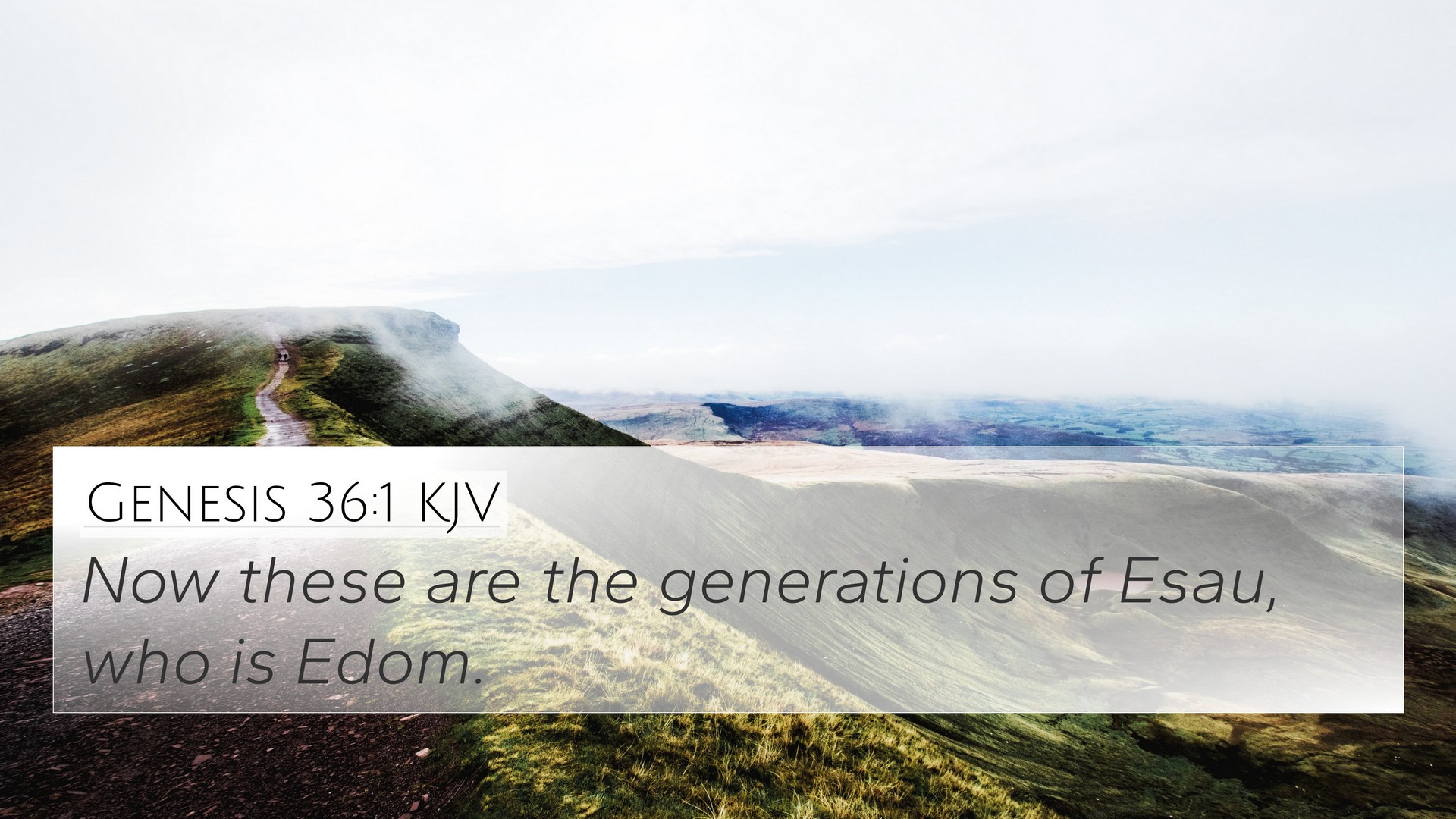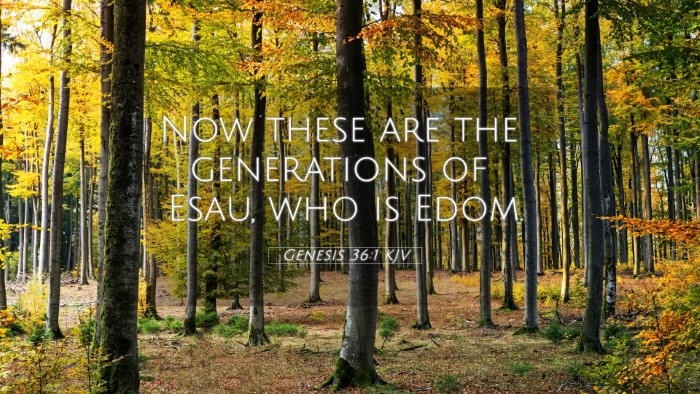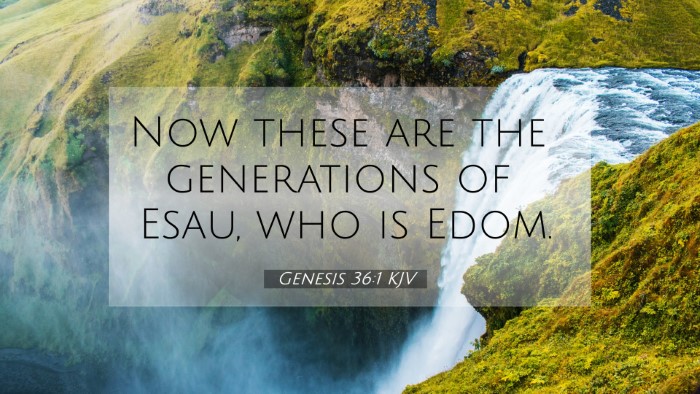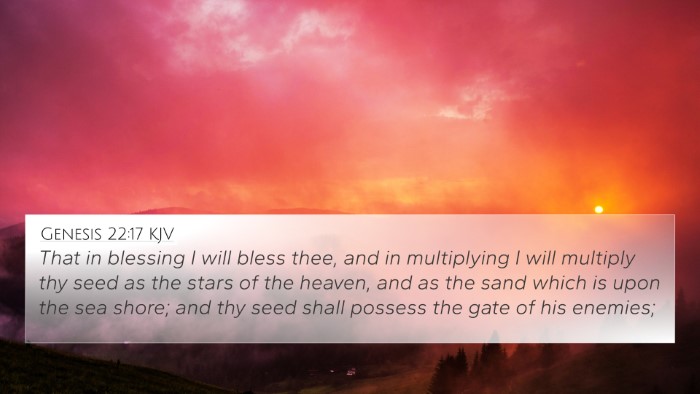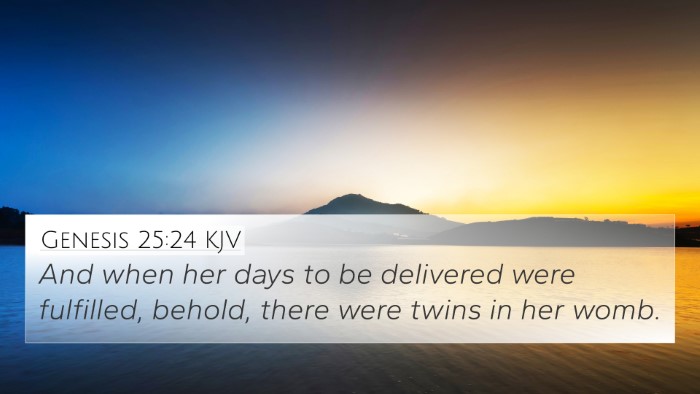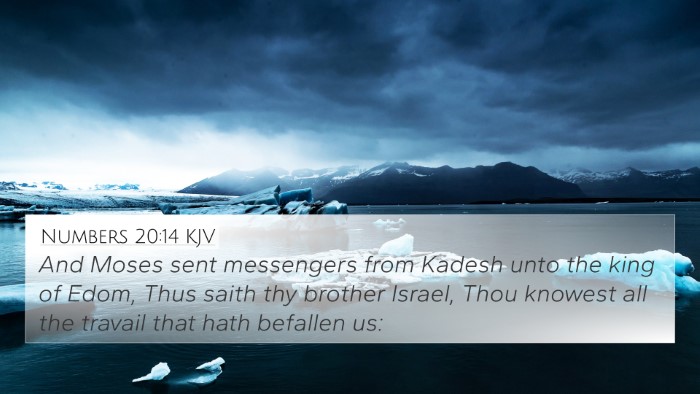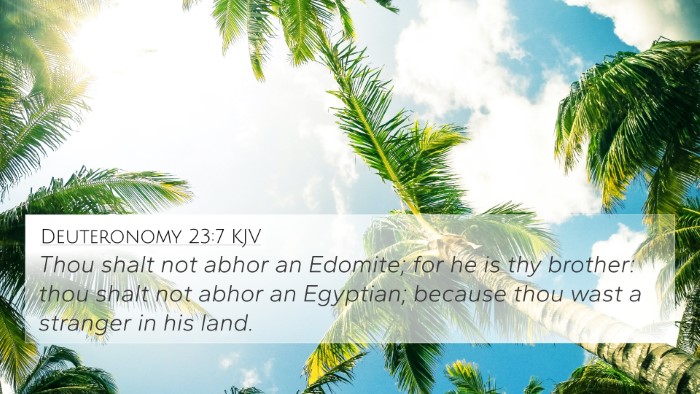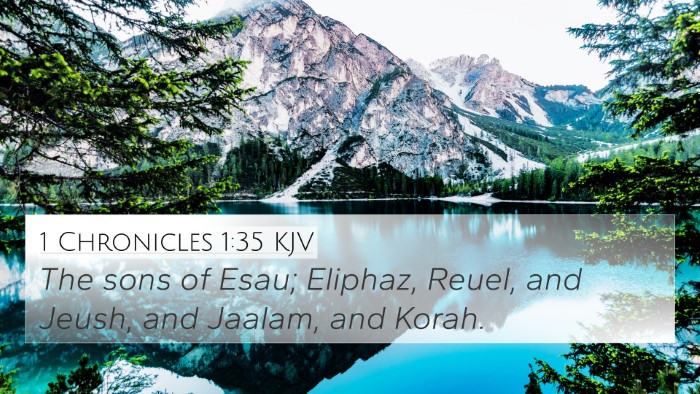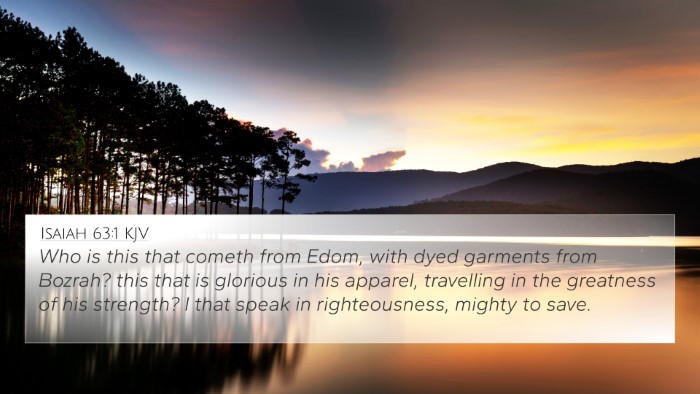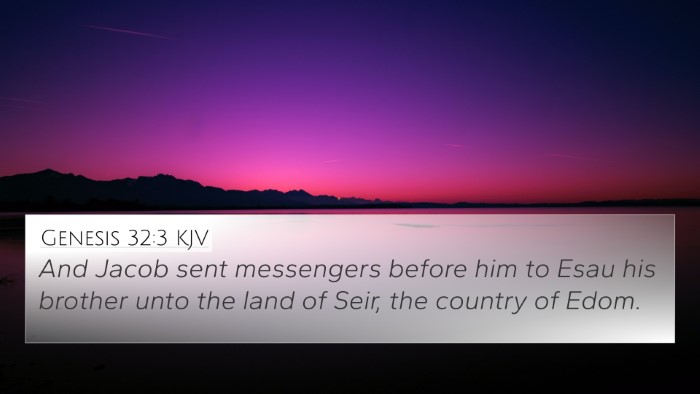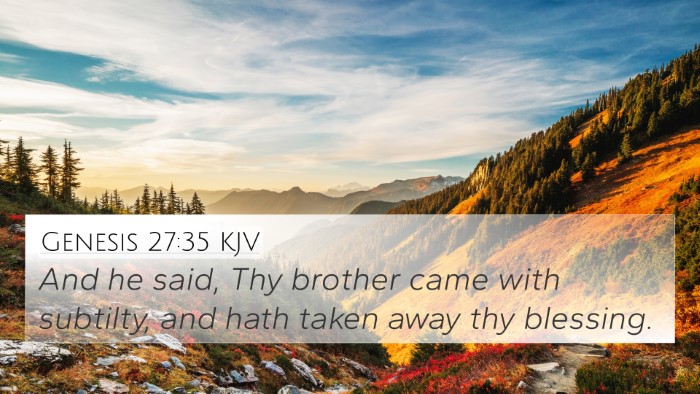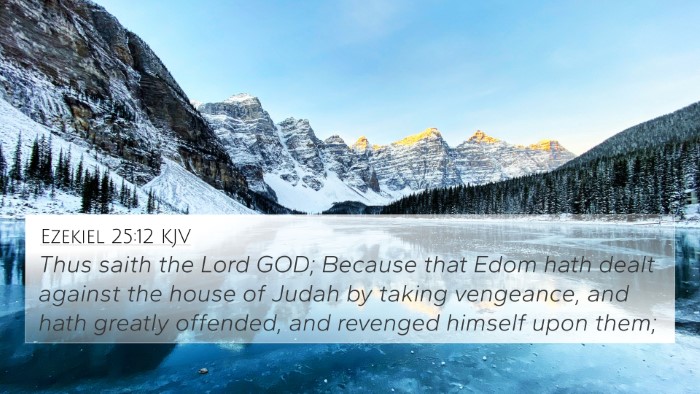Genesis 36:1 - Context and Overview
The verse Genesis 36:1 states: "Now these are the generations of Esau, who is Edom." This verse serves as an introduction to the genealogy and history of Esau, also known as Edom, the brother of Jacob (Israel). In this context, it emphasizes the importance of genealogical records in the Hebrew Scriptures, demonstrating how they provide clarity regarding ancestry and inheritance.
Significance of Esau and Edom
Esau, the eldest son of Isaac and Rebekah, is a significant figure in the Bible. His story is often contrasted with that of Jacob, illustrating themes of rivalry, inheritance, and divine selection. The term "Edom" means "red," which refers to Esau's nickname stemming from the red stew he traded for his birthright (Genesis 25:29-34). The descendants of Esau became known as the Edomites, who would establish a nation south of Israel.
Commentary Insights
-
Matthew Henry's Commentary:
Henry notes that this genealogy establishes Esau's identity and lineage, which is essential for understanding the subsequent narratives about Edom and its relationship with Israel. He emphasizes how genealogies affirm divine promises given to the patriarchs.
-
Albert Barnes' Notes:
Barnes highlights the significance of the name "Edom," explaining its roots and its connection to Esau. He stresses the importance of ancestry in the context of biblical history, noting that these records help affirm sacred history and God's sovereignty over nations.
-
Adam Clarke's Commentary:
Clarke discusses how the mention of Esau and Edom serves to illustrate the broader themes of God's dealings with nations and individuals. He also points out the importance of family lineage in accessing blessings and inheritance within the context of manifest destinies.
Connection to Other Bible Verses
Genesis 36:1 serves as a crucial pivot point that connects various Biblical narratives. Below are some key cross-references that illustrate the connections between this verse and other scripture:
- Romans 9:13: "As it is written, Jacob have I loved, but Esau have I hated." This verse reflects the divine election and the contrasting destinies of Esau and Jacob.
- Genesis 25:30: "And Esau said to Jacob, Feed me, I pray thee, with that same red pottage; for I am faint." This verse illustrates the beginnings of the relationship between Jacob and Esau, foreshadowing their rivalry.
- Genesis 32:3: "And Jacob sent messengers before him to Esau his brother." This verse shows the ongoing relationship and tension between Jacob and Esau that is integral to understanding their descendants' histories.
- Obadiah 1:10: "For thy violence against thy brother Jacob shame shall cover thee, and thou shalt be cut off forever." Here, the consequences of the enmity between the Edomites (descendants of Esau) and the Israelites (descendants of Jacob) are pronounced.
- Numbers 20:14: "And Moses sent messengers from Kadesh unto the King of Edom." This verse highlights the ongoing interactions of Israel with Esau’s descendants, the Edomites.
- Deuteronomy 2:4-5: "And command thou the people, saying, Ye are to pass through the coast of your brethren the children of Esau..." This passage shows the significance of the Edomites in relation to Israel's journey into the Promised Land.
- Hebrews 12:16-17: "Lest there be any fornicator, or profane person, as Esau, who for one morsel of meat sold his birthright." This verse reflects on Esau's character and decisions, pointing to moral lessons derived from his life.
Thematic Analysis
Genesis 36:1 opens various themes related to ancestry, divine purpose, and the complexity of familial relationships in the biblical narrative. It is not only a record of lineage but a starting point for exploring:
- Divine Sovereignty: The distinction between Jacob and Esau emphasizes God's choice and purposes in human history.
- Familial Rivalry: The strife between the houses of Jacob and Esau sets the stage for many later conflicts.
- Redemption Themes: The contrast between the destinies of Jacob and Esau invites reflection on themes of grace, redemption, and human failure.
- Covenantal History: The genealogies showcase God's faithfulness to His promises established with Abraham and Isaac, extending through Jacob and affecting even Esau’s lineage.
Observational Tools for Cross-Referencing
Understanding the connections between biblical verses like Genesis 36:1 requires using effective tools and methods:
- Bible Concordance: A valuable resource for finding cross-references and word studies.
- Bible Cross-Reference Guide: Provides links between verses that share themes or contexts.
- Cross-Reference Bible Study: A methodical approach to studying the relationships within scripture.
- Bible Reference Resources: Collections of notes, tools, and guides that facilitate deeper understanding.
- Bible Chain References: Systems that connect verses in a chain format, enhancing thematic study.
Conclusion
Genesis 36:1 is more than just a genealogical note; it offers a window into the intricate relationships, conflicts, and themes present in the Bible. By cross-referencing this verse with others, readers gain a richer understanding of the biblical narrative and the unfolding story of God's people, making it an essential part of scripture study.
